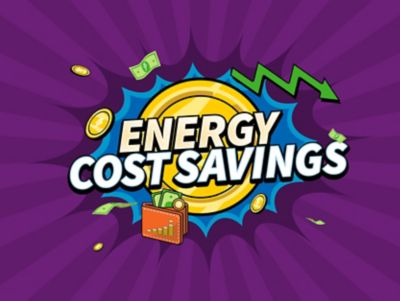Your real aerated wastewater treatment system costs
Reading time: 4 minutes
When you buy any product that uses electricity, what you pay in the store doesn't represent the total cost of ownership. This is especially true when it comes to your wastewater treatment system costs – and in particular, the blowers that you need to install there. To illustrate what this looks like, let’s first consider all of the expenses you have to keep in mind.
The total cost of ownership
The biggest cost of an aerated wastewater treatment system is its blowers that provide the aeration air. Although the word cost often refers to the purchase itself, there are many more factors that make up the total cost of ownership of a blower installation.
Investment costs
First, you have your capital expenditures, i.e. what you spend on the blower itself. There are a lot of options out there. Traditional technologies, such as lobe blowers, are often more inexpensive to purchase.
Installation
Operator
When installing a unit, you might hit some unexpected costs. Not all blower manufacturers offer a complete package. Things like inlet filters, outlet compensators, silencers, and frequency converters, sometimes need to be purchased separately.
Aside from missing parts, you could also be dealing with space issues. Your new equipment may not fit into your existing blower room. Opting for an outdoor canopy or extending the current blower room are often the only options. A plug-play solution is the easiest way to ensure all parts necessary for operation are included in the offer and the dimensions described in the offer.
On top of that, programming a PLC, external VSD, and your SCADA system to connect with your new units further raises the installation budget.
Energy
Aeration blowers are responsible for 80% of the energy consumption in a wastewater treatment plant. Taking up such a bulk of all of the money you will spend, it’s important not to overlook the energy efficiency of the unit.
The energy efficiency of a unit goes hand-in-hand with its sustainability. Reducing your carbon footprint is not only good for the environment, but it is also increasingly required by government regulations. That is why your emissions should be factored into your decision.
Here is an example: A wastewater treatment plant operates three 200 kW lobe blowers. All of them are running continuously at maximum load. If you were to replace them with three 140 kW magnetic bearing turbo blowers, you could save about 900 tons of CO2 annually. That’s the equivalent of planting 40,000 trees.
Maintenance
Keeping your unit in top condition requires regular maintenance. Just like investing in energy efficiency, investing in maintenance will pay off in the future. An estimation of the service intervals on certain components will give you an idea of how much service your units will require.
However, the integrated control and monitoring equipment of each unit could help you schedule maintenance at the appropriate time. A maintenance agreement will help you to better manage service costs upfront.
Reliability: your insurance for the future
Then there is one more factor that can’t be monetized but can’t be overlooked either: peace of mind.
Because when something goes wrong in a water treatment facility, the consequences can be devastating – as well as very expensive. For industrial wastewater treatment sites, these may include shutdowns and government penalties if the water is not treated according to specs.
In less severe cases, it might mean having to quickly find rental blowers. While these can usually be on site within 24 hours, they are only a short-term solution due to the cost.
This is the kind of cost that many people overlook when making the initial purchasing decision.
You may pay a little more for reliability on the day you purchase the new compressed air equipment. However, because your blower installation is the backbone of your aeration system, there will come a day when you are happy that you did.
Taking into account all of these factors, you have a choice to make when investing in a new blower: Keep capital expenditures as low as possible now or reduce operating expenses later.
How important are capital expenditures to you?
The first question to ask yourself is: what would be the operating time of my blowers? If you’re looking for a replacement for your filter backwash system, you’re likely dealing with an installation that only operates during certain hours of the day. The low amount of running hours might drive you more towards a solution that requires a smaller initial capital investment. If you’re looking at replacing the installation for your aeration applications, your blowers are likely running 24/7. Dealing with such a high amount of running hours, you’ll need to take the operating costs into account as well.
To pick the model that is right for you, let’s first look at a real-life example that illustrates all of the costs you have to factor in.
Let’s say you operate a small wastewater treatment facility with a capacity for 30,000 people. You have installed two 37 kW blowers and another is on standby. Let’s assume they run 6,000 hours per year, which means their total power consumption is 440,000 kWh. Assuming an energy cost of 0.1 €/kWh, this comes out to an annual total of €44,000.
That is unless you wanted to cut costs when making the initial investment and decided to go with an inefficient blower. In that case, your energy costs could be 30% higher. That’s an extra €13,000 annually just for electricity. Assuming you will use the blowers for 10-15 years, you are looking at an additional €200,000 in operating costs.


